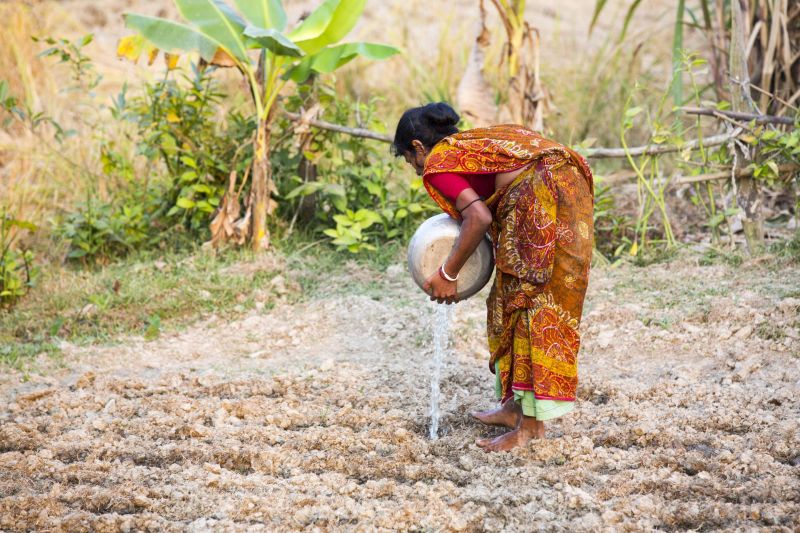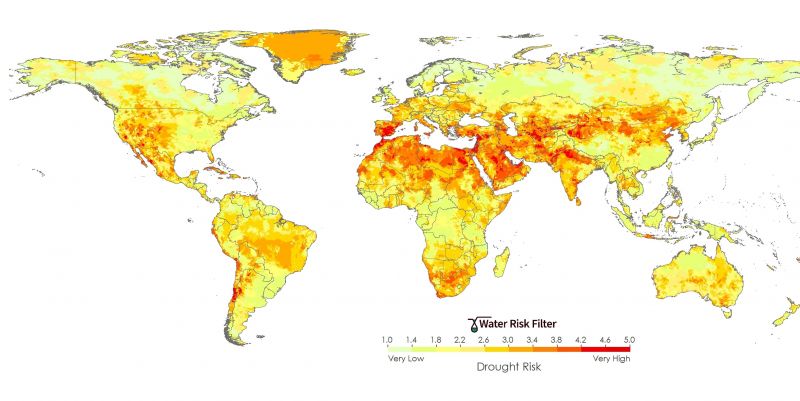Worsening Drought Risk Impacts 55 Million People Every Year, Says WWF Report
Published on by Water Network Research, Official research team of The Water Network in Non Profit
The climate crisis is creating a drought crisis affecting tens of millions of people every year across the world as well as energy and food supplies, warns a new report from WWF Germany.

Drought risk is increasing worldwide, including in India (© Global Warming Images/WWF)
According to Drought Crisis: The Global Thirst for Water in the Era of Climate Change , the impact of extreme droughts is growing worldwide, including in Europe, putting increasing pressure on energy supplies, food production, wetlands and cities and impacting 55 million every year on average.
The report used available data and WWF’s leading online water risk tool, the Water Risk Filter , to assess assessed the drought risk for cities, maize, rice, and wheat production, wetlands, power plant sites, and areas of water-related political conflict.
"Droughts destroy important ecosystems and endanger food security, fueling social unrest and political conflict, ” said Philipp Wagnitz, Freshwater expert at WWF Germany. “ The international community must significantly increase its climate contributions in order to limit global warming to 1.5 degrees – otherwise the fatal drought spiral will continue worldwide.”
In a world that depends heavily on water for its energy supplies – be it for cooling, transportation or hydropower – more frequent and more intensive droughts threaten energy production, warns the report. Almost half of the world's thermal power – mainly coal, natural gas and nuclear power – is produced in areas with a high risk of drought.
In Spain alone, over 50 percent of the 269 power plants recorded are exposed to a high to very high drought risk. In France, among the 27 power plants with a high drought risk are 4 key nuclear power plants, while 4 coal-fired power plants, as well as the Altheim hydropower plant and the Kirchmöser gas plant, are also exposed to high drought risk in Germany.
"The construction of new coal, gas or nuclear power plants worldwide is ludicrous in view of the drought crisis. Hydropower is also not a green alternative in times of low water levels and because of its many environmental impacts. The plunging price of wind and solar energy means they are now competitive economically and must be given priority," demanded Wagnitz.

Worldwide drought risk based on assessment by the WWF Water Risk Filter (© WWF Water Risk Filter)
According to the WWF report, 22 percent of basic food crops such as wheat, are already grown in areas with a high to very high risk of drought.
Worldwide, 19 percent of cities with more than one million inhabitants are already located in areas with a high to very high risk of drought - a total of around 370 million people are affected. The list includes six megacities with more than 10 million inhabitants: Delhi, Cairo, Karachi, Istanbul, Rio de Janeiro, and Hyderabad. In Europe, in addition to Istanbul, Madrid, and Lisbon, among others, are currently exposed to a high risk of drought.
"Other cities such as Rome, Naples, Athens, and Munich could follow suit in a few years' time with the drought risk, " said Wagnitz.
If the risk of drought increases, the probability of regional conflicts over scarce water resources increases. In politically unstable countries such as Syria, Lebanon or Palestine, droughts intensify existing crises. Particularly affected in the Middle East, where 90 percent of the land area falls into the highest risk category for droughts.
Source: WWF
Find the full document HERE.
Media
Taxonomy
- Agriculture
- Environment
- Drought
- Climate Change
- Climate Change Adaptation
- Climate Change Resilience